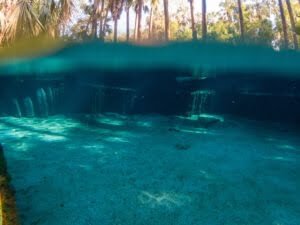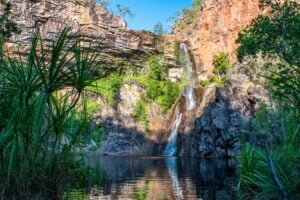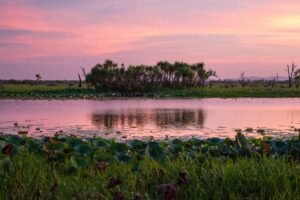If you know anything about us, you probably know that we love the ocean and reefs, so it shouldn’t come as any surprise how much we were looking forward to reaching the Ningaloo Reef.
The Ningaloo Marine Reserve is a World Heritage Area that covers over 300km of coastline from Red Bluff up to the North West Cape of Exmouth. It is one of the world’s largest fringing reef, as well as one of the healthiest thanks to its remote location, and it houses a staggering amount of biodiversity. We spent over 4 months in the Ningaloo region, as much of that as we could in the water, and we saw something new or different every time we went in.

Our first camp on the Coral Coast was at Red Bluff in Quobba Station. There are several caravan-accessible camps south of Red Bluff, such as the Blowholes, that are great options for camping, but if you have the facilities to tent camp, we highly recommend Red Bluff. There were a few small off-road vans at camp when we were there, but we were quite glad we didn’t take ours up there because of the rough road in. If heading to Quobba or Gnaraloo Stations, make sure to stop at the Blowholes and Aquarium at Point Quobba. The Blowholes give you a good appreciation of just how rough this coastline can be, particularly the iconic “King Waves Kill” sign. The Aquarium is a great snorkel spot, within easy walking distance of the Blowholes campground. Just watch the currents; they can be quite strong here!

King Waves Kill 
Blowholes at Quobba
We timed our arrival to Red Bluff perfectly and managed to score one of the best campsites, on a hill overlooking the beach and Red Bluff itself. Our neighbour called it the “Penthouse” and said someone had just vacated it not even an hour beforehand. We booked a stay for 5 nights, which was probably a bit long of a stay in hindsight, but it did give us plenty of time to explore and also just simply enjoy our surroundings.
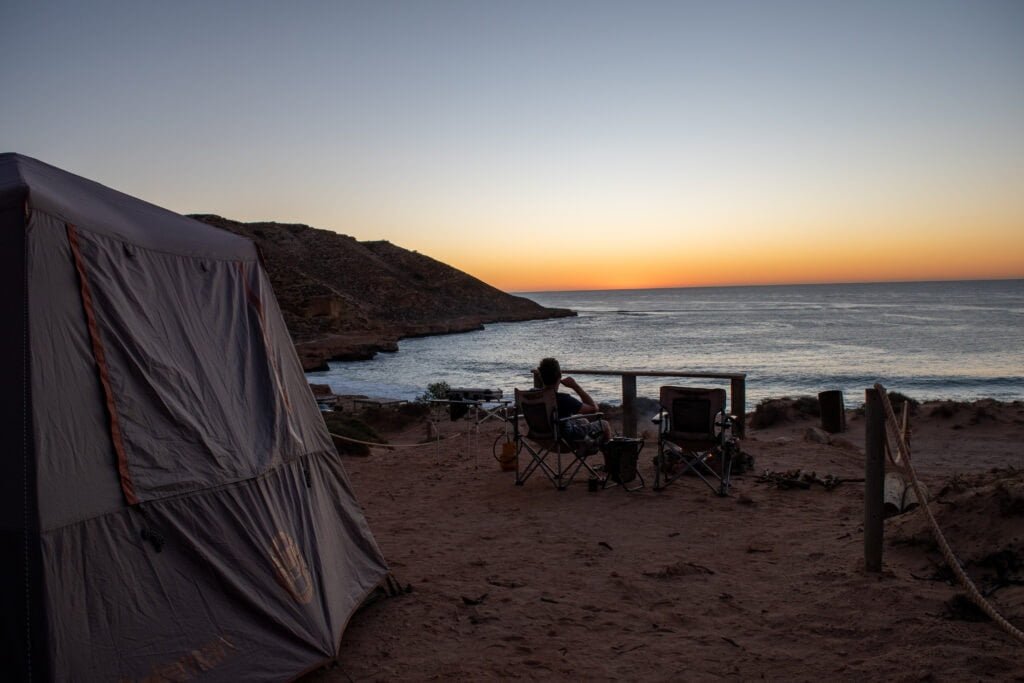
We spent most of our days in the spectacular snorkel spots at Gnaraloo Station; we especially loved 3Mile Lagoon, with its protected clear waters, and the drift snorkel and beautiful, remote beach at Gnaraloo Bay. We also had our most exhilarating snorkel near Tombstones, a popular surf spot. We were having a leisurely paddle around when we excitedly spotted a turtle, which was very quickly overshadowed by seeing two decent-sized (around 2-3 meters) sharks swimming past us, then another two sharks appearing on the other side of us. It was the first time we’d seen sharks whilst snorkeling, and to see four in one go really got the adrenaline pumping. We calmly but quickly made our way to shore and waited for our heart rates to come back down. It definitely made for a memorable intro to the Ningaloo Reef!
Other than snorkeling, we had a great time exploring the sea caves at Red Bluff, watching more confident surfers than us tackle the world-class waves, and enjoying several mango smoothies from the shop (a must-try!).
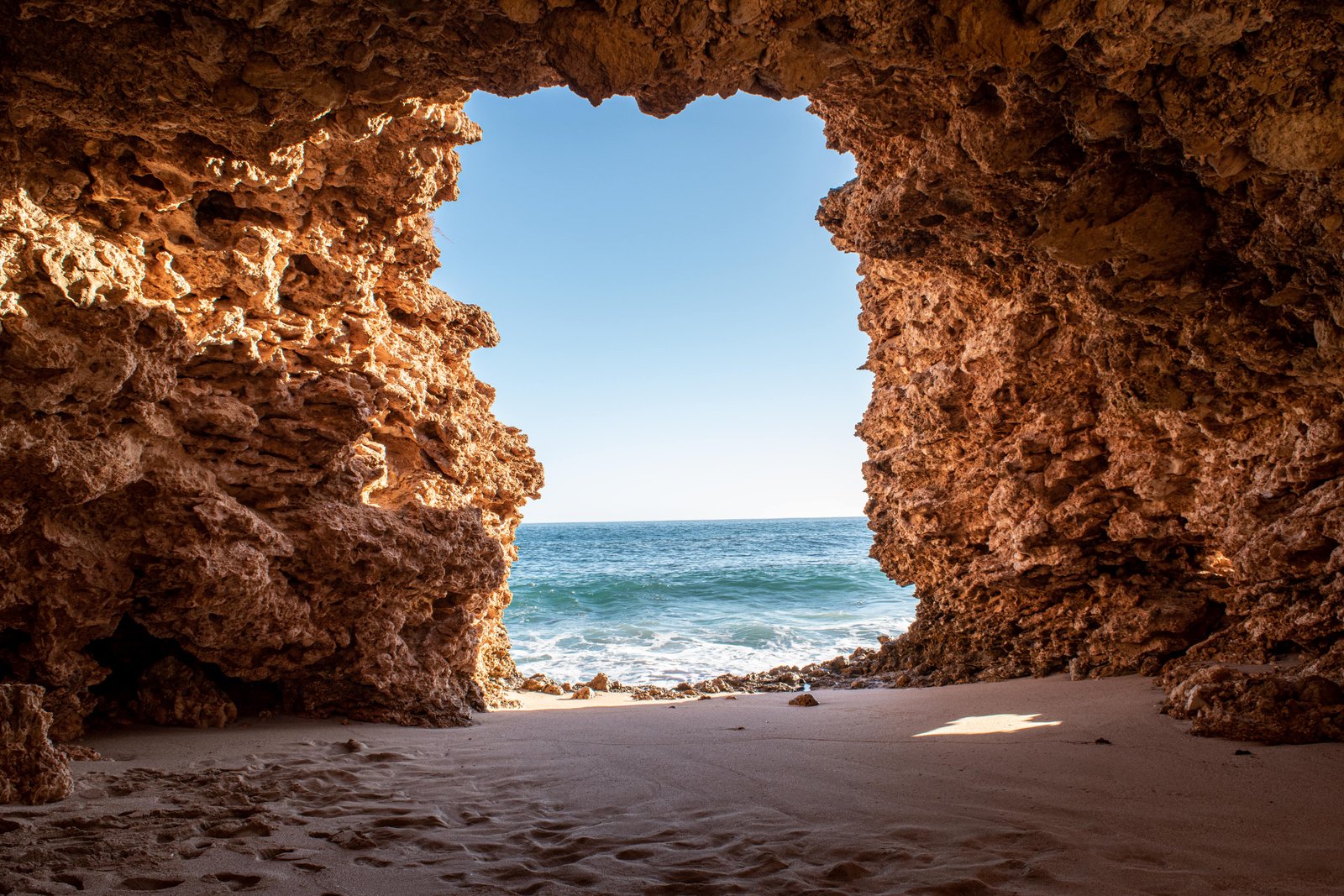
After our delightful stay at Quobba Station, we grabbed our van and continued north to another station, Warroora Station. Warroora Station, along with many other stations in the Ningaloo and Exmouth regions, has been the centre of a bit of controversy due to a takeover from National Parks WA, which depending on who you ask is seen as either a positive or negative situation. Camping at Warroora Station used to be on a “first in, best dressed” arrangement, but after National Parks took over at the end of 2019, it switched to an online booking system. 14 Mile campground is probably the most popular and is also the best/easiest place to go with a caravan. Because we didn’t book far enough in advance, the only camps left were behind the dunes, still within easy walking distance to the beach. The beachfront spots are quite spectacular, but at least behind the dunes you can be more protected from some of the high winds and tides that can occur along this coastline. Warroora Station is a great place for all things beach and ocean: swimming, snorkeling, paddling, fishing, and relaxing. Be aware if camping here, you need to be fully self-sufficient with your own chemical toilet; nearest town for supplies is either Carnarvon or Coral Bay.
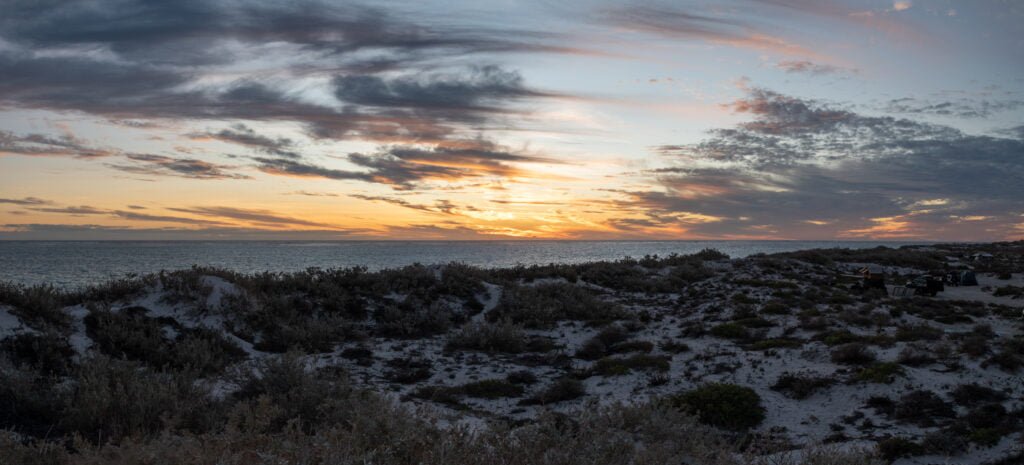
From Warroora Station, we made the “big” 60km journey to Coral Bay. Coral Bay is a tiny tourist town made up of two massive caravan parks, a few shops, and not much else. Normally touristy spots are not our kind of place, but the sea life around Coral Bay makes it well worth being crammed in with lots of other people at the caravan park. The most popular beach at Coral Bay is in town, known as Bill’s Bay. Its protected location makes it a great spot for young kids and less confident swimmers, and it is crammed full of coral. If you know where to go, you can swim out to see Ayers Rock, a massive brain coral that is thousands of years old!
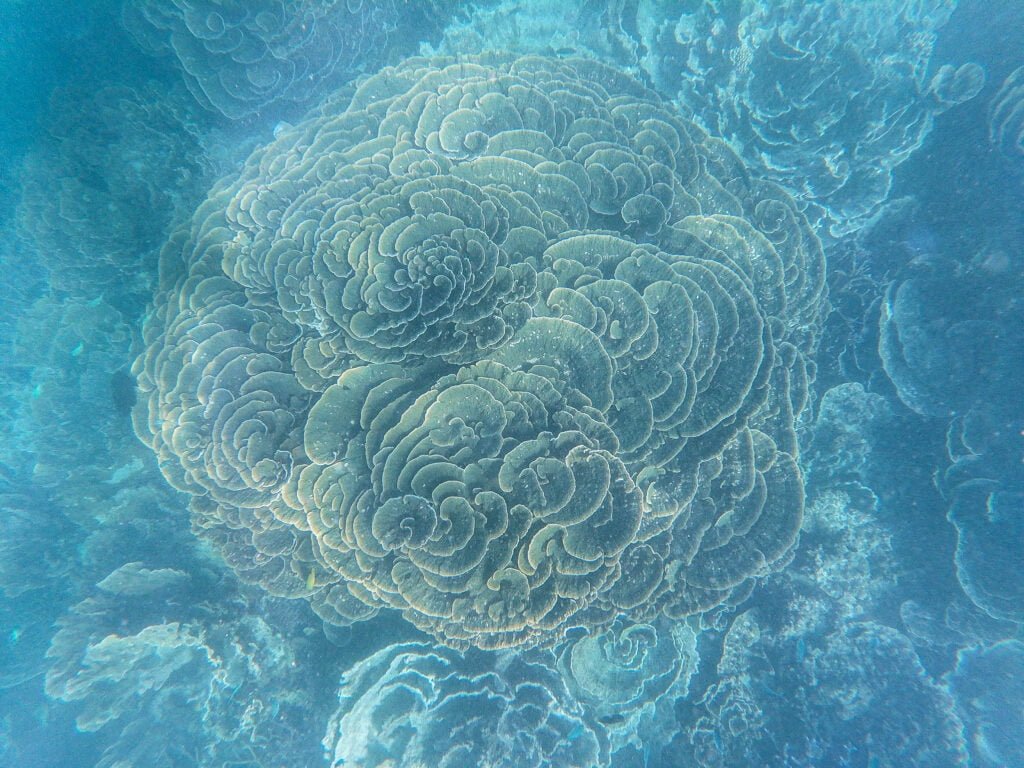
If you go south from Bills Bay, following the beach around the cliffs, you’ll reach Paradise Beach, where you can do a fantastic drift dive, including through a section of lavender-coloured coral known as the “Lavender Garden.”
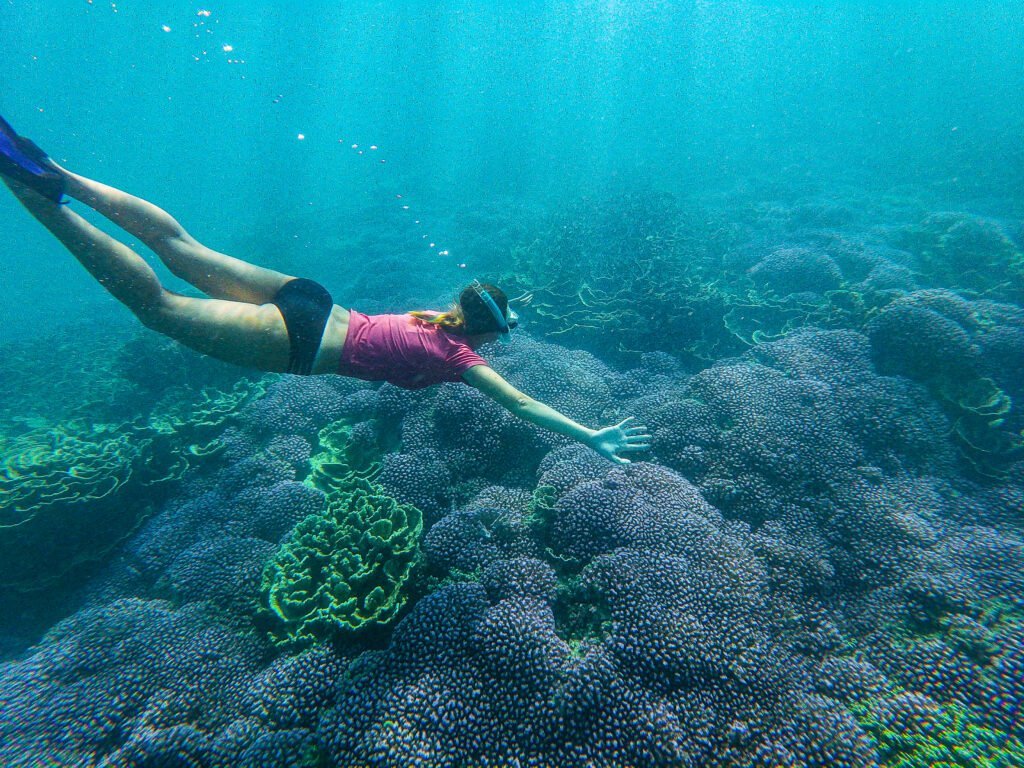
If you go north from Bill’s Bay at low tide along the beach, you’ll come to Skeleton Bay, where from September to March you can see the shark nursery, composed of mainly black tip reef shark. When we visited, there was probably close to a hundred sharks in the water! And all of this is within easy walking distance of the town centre.
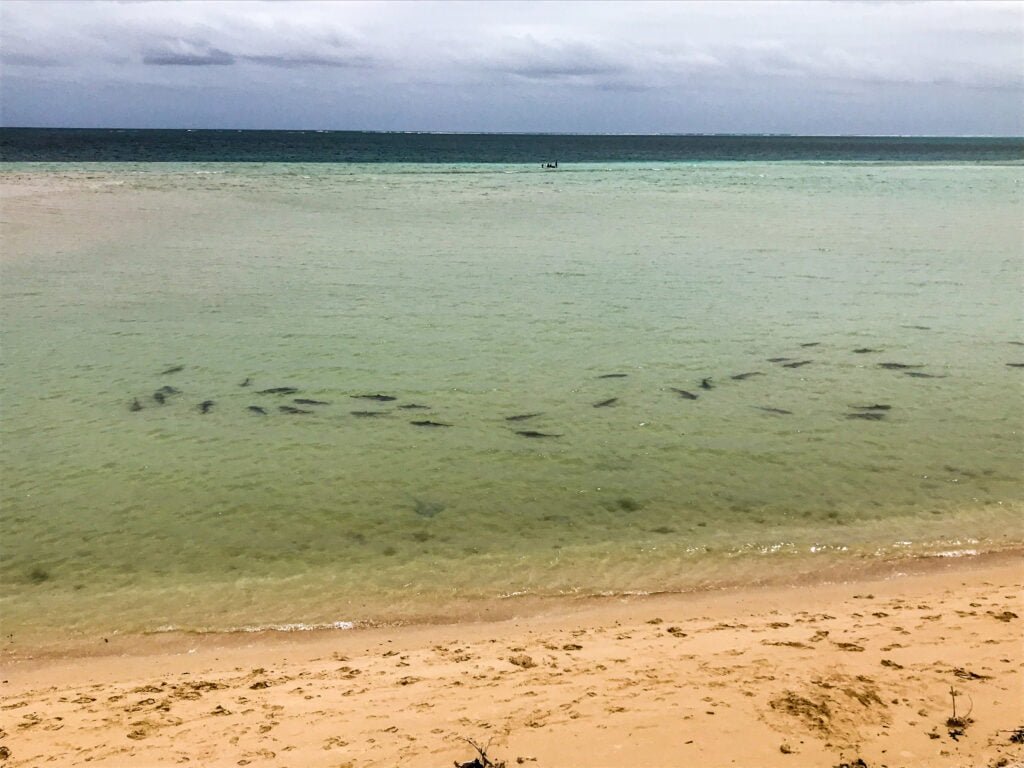
If you want to venture a bit further afield, there are plenty of other great beaches and reefs to choose from just a short drive from town. North of Coral Bay you have the popular spots of Oyster Bridge and the Lagoon, which are fantastic as long as the swell’s not up. Be aware the sand gets really soft in these parts; we saw cars bogged every time we went up this way.
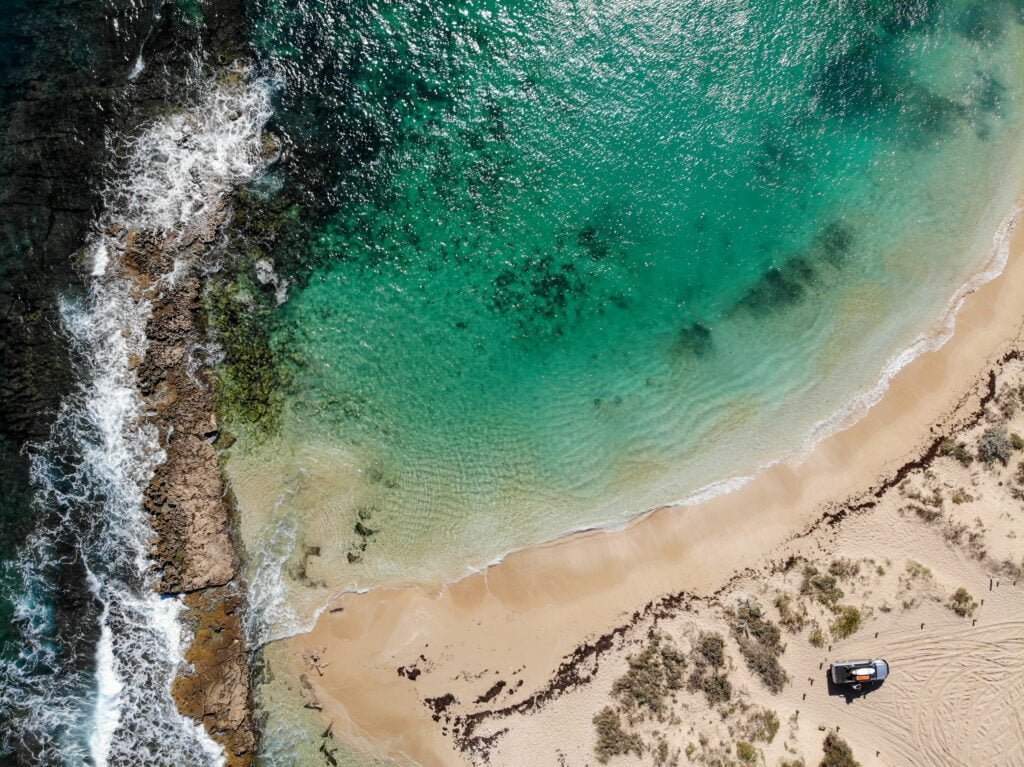
South of town is Fiver Fingers Reef; to this day it is still one of our all-time favourite snorkel spots. It’s a great beach to set up for the day, drop a line in, and go for a swim or a paddle. Here you’ll see lots of variable coral formations, heaps of fish, plenty of turtles, rays, and reef sharks, and the currents aren’t usually too strong either.
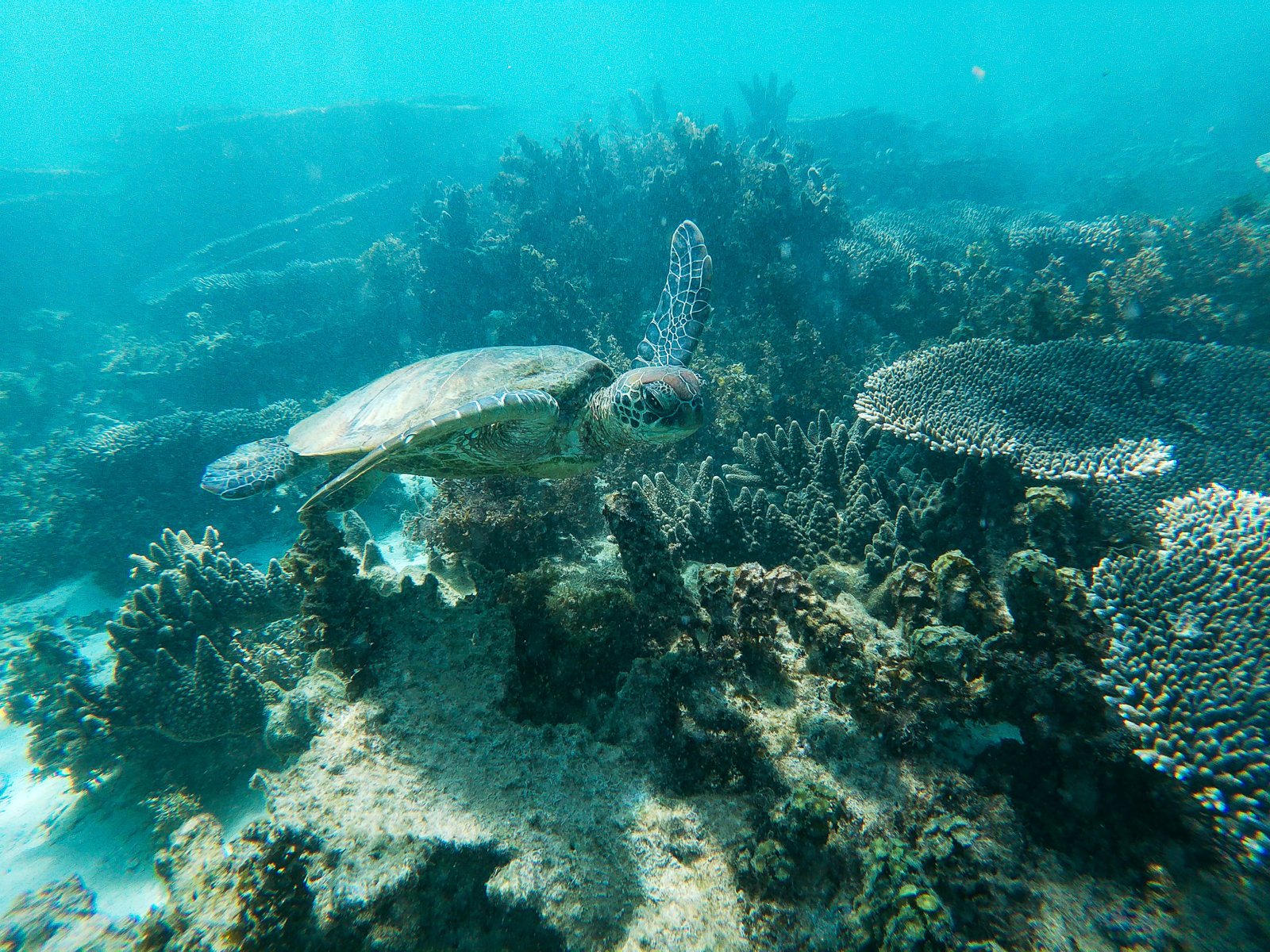
If you have access to a boat or go on a tour, you can see some really special things out on the reef. We got to see both a turtle and a shark “cleaning station”, where turtles and sharks go to get cleaned by other fish. The turtles actually line up for their turn to get cleaned! Turtles are usually pretty chill animals, but you’ll never see a more blissed out turtle or shark than at one of these cleaning stations – a very unique experience! This area is also known as a great spot to see manta rays, which are large rays that can grow up to 7 meters long.
By this point, we were fully enamoured with the Ningaloo Reef. Lucky for us, we had the opportunity to spend the next three months in Exmouth, exploring every part of this beautiful coastline that we could. Stay tuned for our next post where we tell you all about it!



